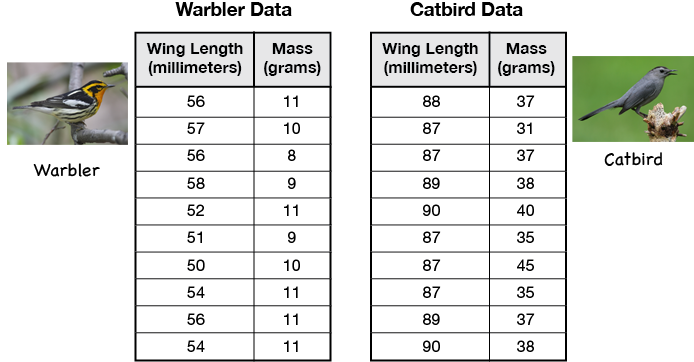Yellow
Green
Blue
Red
Magenta
Remove
- The ornithologists measured the wing length and mass for two more types of birds, warblers and catbirds. They measured both the length of the wings in millimeters (mm) and the mass in grams (g). They recorded their data in the tables below:
- What is the median wing length of the warblers that were captured?
- What is the median mass of the warblers?
- Make a point graph of the data for warblers and catbirds. Plot wing length on the horizontal axis and mass on the vertical axis. Scale your horizontal axis to 100 millimeters and your vertical axis to 50 grams. Use dots as points for the warblers and Xs for the catbirds.
- Using the graph, estimate the average wing length of catbirds that were captured.
- Using the graph, estimate the average mass of catbirds that were captured.
- How do the warblers' data compare with the catbirds' data? What can you say about their wing length and mass from the graph?
- A bird is captured and measured to have a mass of 32 grams and wing length of 86 millimeters. Is it more likely to be a warbler or catbird? Why do you think so?
- A typical hummingbird has a mass of about 4 grams, and its wing length is about half that of a catbird. If you measured the wing length and mass for several hummingbirds, where on your graph would the data cluster?













